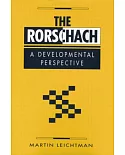Integrated care is receiving a lot of attention from clinicians, administrators, policy makers, and researchers. Given the current healthcare crises in the United States, where costs, quality,
and access to care are of particular concern, many are looking for new and better ways of delivering behavioral health services. Integrating behavioral health into primary care medical settings
has been shown to: 1) produce healthier patients; 2) produce medical savings; 3) produce higher patient satisfaction; 4) leverage the primary care physician's time so that they can be more
productive; and 5) increase physician satisfaction. For these reasons this is an emerging paradigm with a lot of interest and momentum. For example, the President's New Freedom Commission on
Mental Health has recently endorsed redesigning the mental health system so that much of this is integrated into primary care medicine.Yet there are few resources to assist all those that are
interested in moving toward integrated care. This has been a major impediment to more widespread adoption of integrated care. The two co-editors of this proposed volume have produced some of
the key books in this area: Dr. James (along with co-editor Ray Folen) has recently produced The Primary Care Consultant which is a good resource that helps define the unfortunately usually
misunderstood and neglected consultation liaison function of the integrated care behavioral provider. Dr. O'Donohue has co-written a book A Primer of Integrative Behavioral Care (Prometheus
Press, in press) that is designed to serve as a general introduction to integrated case; as well as co-edited some more specific titles on medical cost offset, integrated care and substance
abuse, and Behavioral Integrative Care (2005, Brunner Routledge). Please see our enclosed vitas for more information.What these books fail to do is to provide very concrete practice guidelines
and other associated practical tools for the practicing integrative care behavioral health professional. This book is designed to fill this important gap. All chapters will be designed to
provide useful materials to understand this quite different mode of practice. None of the chapters will be academically oriented, although all information will be evidenced based. As such it
will reach a wide audience and have no direct competitors. We believe because of the editors' profile in this area, the excellent reputations of the chapter authors, and the practicality of
this book it will sell very well.





















